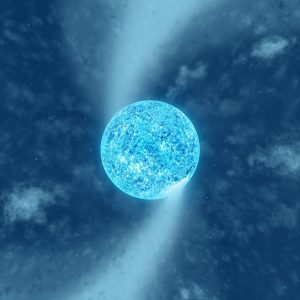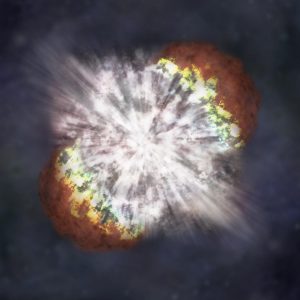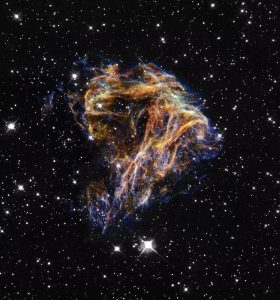Arricchimento del mezzo interstellare
Spirali nel Vento Stellare della Supergigante Zeta Puppis
Un team internazionale di astronomi ha scoperto che macchie luminose presenti sulla superficie di una stella supergigante stanno portando alla formazione di enormi strutture a spirale nel suo vento stellare. I risultati sono stati pubblicati su Monthly Notices of the Royal Astronomical Society. Continua a leggere
Una Rara, Antica Supernova Superluminosa
La morte di una stella massiccia, avvenuta in una galassia ben dieci miliardi di anni fa, ha creato una rara supernova superluminosa, che gli astronomi ritengono una delle più distanti mai scoperte. Continua a leggere
Fuochi d’artificio stellari
Nessuno spettacolo pirotecnico estivo potrebbe eguagliare la delicata trama di questi filamenti e la pittorica bellezza di queste scintille colorate. Eppure N49 rappresenta l’ultimo atto, distruttivo e spettacolare, del ciclo evolutivo di una stella. Continua a leggere


